Present day artwork can encompass so many walks of life. Not only does it find and create rich cultural inspiration, but it creates new concepts never before seen. Modern art is one of the newer additions to the art world, and umbrellas many vital types of art in the world. It reaches deepest into the psyche, and creates space for interpretation never before had.
Modern art carries many forms of visual art in particular that we can recognize, but here I will be focusing on painting origins. In this post, I will cover the different types of modern art and their affect on the movement.
Modern Art’s Origins
Modern art is a term used to describe the art movements and styles that emerged in the late 19th and 20th century. It encompasses a wide range of styles, from impressionism to abstract expressionism. It also includes a variety of media such as painting, sculpture, and installation art.
Modern art is important in the art world for several reasons. First, it represents a break from the traditional art forms and conventions that had dominated Western art for centuries. It introduces new styles, techniques, and approaches to art-making. This experimentation helps to expand the boundaries of art to explore new ways of expressing yourself.
Secondly, modern art challenged the prevailing cultural and social norms of its time. It often addresses controversial or taboo subjects such as sexuality, race, and politics. This opened up important discussions about these issues and helped to shape the cultural and social landscape of the 20th century.
Finally, modern art had a significant impact on contemporary art. It influences new generations of artists and shaping the direction of the art world today. Many of the ideas and techniques developed by modern artists continue to be relevant and important today.
Different Kinds of Modern Art (A Timeline)
The history of modern art is a complex and diverse one. It spans several artistic movements and styles that emerged from the late 19th century to the present day. Some of the most important movements in modern art include:
Impressionism (1860s-1880s):
Impressionism is a modern art movement that emerged in the mid-19th century in France. The term “impressionism” comes from Claude Monet’s painting “Impression, Sunrise.” It is exhibited in 1874 and served as a manifesto for the movement after previous years of gaining recognition.

Impressionism is a reaction against the traditional art of the time, which emphasized realistic representations of subject matter. The impressionists sought to capture the fleeting effects of light and color in nature. They wanted to convey the sensation of a momentary experience rather than a fixed, static image.
Some of the key characteristics of impressionism include use of bright, pure colors, broken brushstrokes that suggest spontaneity, and an emphasis on light and shadow. Many impressionist paintings depict outdoor scenes, such as landscapes, seascapes, and cityscapes.
Some of the most well-known impressionist painters include Claude Monet, Edgar Degas, Pierre-Auguste Renoir, Camille Pissarro, and Mary Cassatt. These artists were known for their innovative techniques and their ability to capture the fleeting beauty around them.
Overall, impressionism is a revolutionary movement in the history of art, and it had a profound influence on the development of modern art. Its emphasis on expressive elements paved the way for the development of subsequent movements such as Fauvism, Expressionism, and Abstract Art.
Post-Impressionsim (1880s-1890s):
Post-Impressionism emerged in France during the 1880s and 1890s. and it represented a continuation and extension of the Impressionist style. The Post-Impressionists sought to push beyond the limitations of Impressionism. They felt it is too focused on surface appearances and lacked a deeper sense of meaning and structure.
The Post-Impressionists developed a variety of new techniques and styles that were more expressive and individualistic as well. Some of the key figures in this movement include Vincent van Gogh, Paul Gauguin, Georges Seurat, and Paul Cézanne.
Vincent van Gogh is perhaps the best-known Post-Impressionist artist, and his works are characterized by their intense color and emotional intensity. Van Gogh’s paintings often feature bold, thick brushstrokes and swirling patterns that convey a sense of movement and energy.
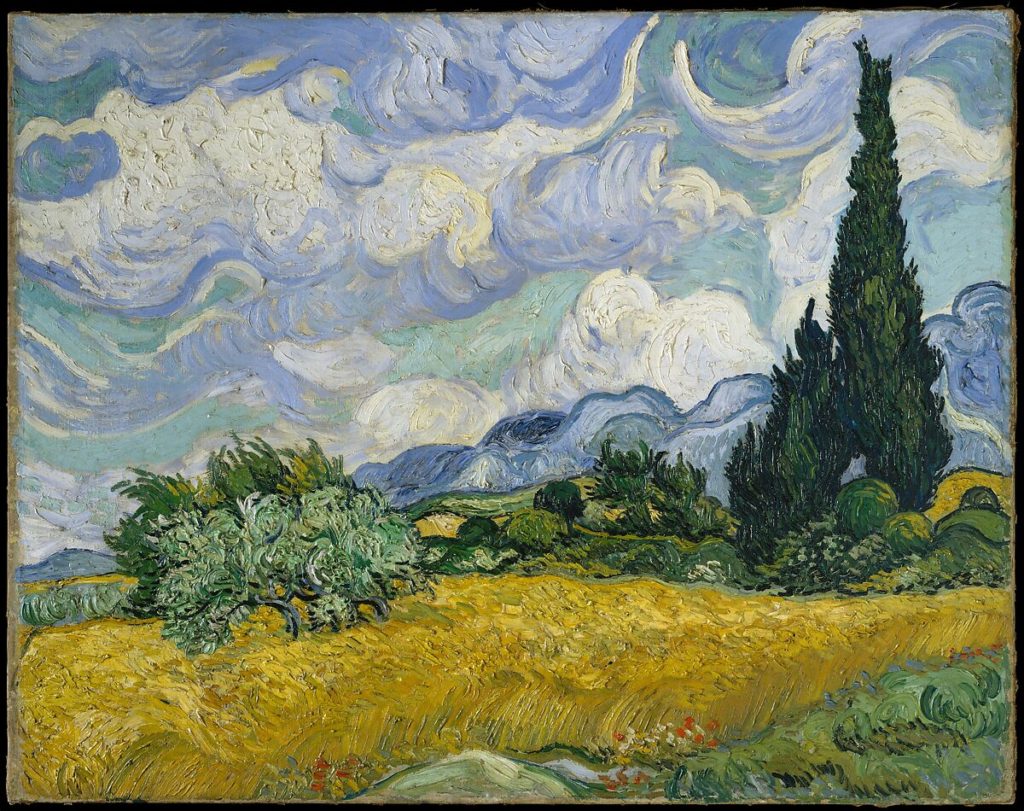
Paul Gauguin, on the other hand, is known for his use of bright, pure colors and his exploration of exotic and mystical themes. Gauguin is deeply influenced by the art and culture of Tahiti, where he spent several years painting and living among the local people.
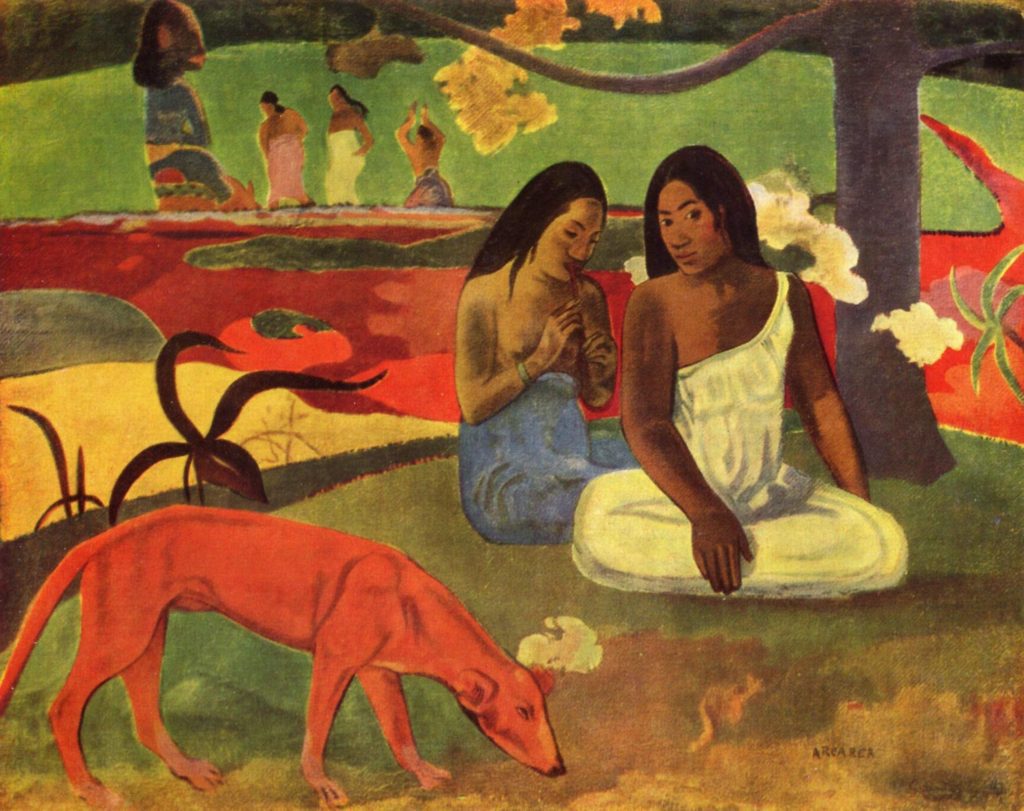
Also, Georges Seurat was another key figure in the Post-Impressionist movement. He is best known for his development of the technique known as Pointillism. This involved the use of small, distinct dots of color that were applied in patterns to create a sense of form and texture.
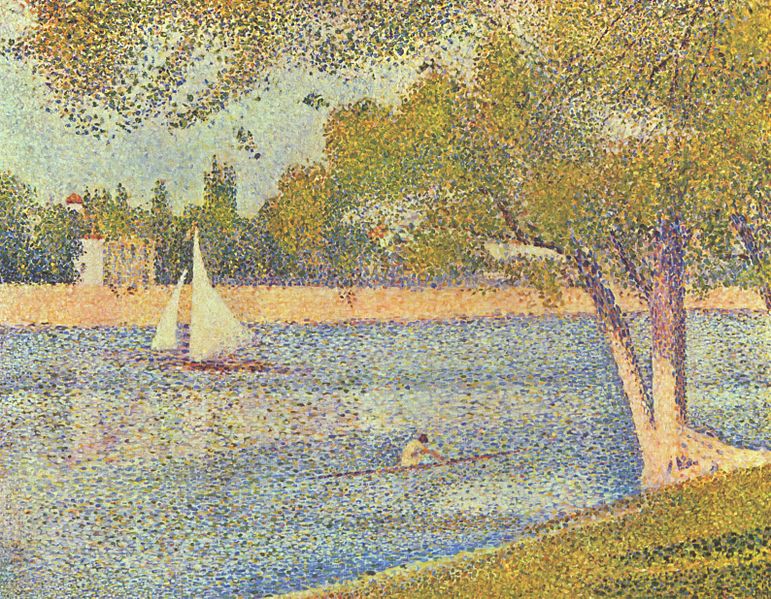
Paul Cézanne’s contributions to the movement were perhaps more subtle but equally important. Cézanne was interested in the underlying structure and geometry of nature. His paintings often feature simplified forms and planes of color that suggest a more abstract, intellectual approach to art.
Fauvism (1900-1910):
Fauvism was a short-lived but influential art movement that emerged in France at the turn of the 20th century. It was characterized by its use of boldness and its rejection of traditional rules of perspective and proportion.
The name “Fauvism” comes from the French word “fauve,” which means “wild beast.” This term was originally used by critics to describe the unconventional and daring style of the Fauvist painters.
In addition, the movement was led by a group of young artists, including Henri Matisse, André Derain, Maurice de Vlaminck, and Georges Braque. These artists were inspired by the vibrant colors and bold brushstrokes of Post-Impressionism. Also as well as by the art of non-Western cultures such as African masks and Japanese prints.
Fauvist paintings are characterized by their intense, bright colors, which are often applied in bold, thick brushstrokes. The Fauvists are interested in capturing the emotional impact of color than in representing the natural world realistically. Their works often feature highly stylized or abstracted forms.
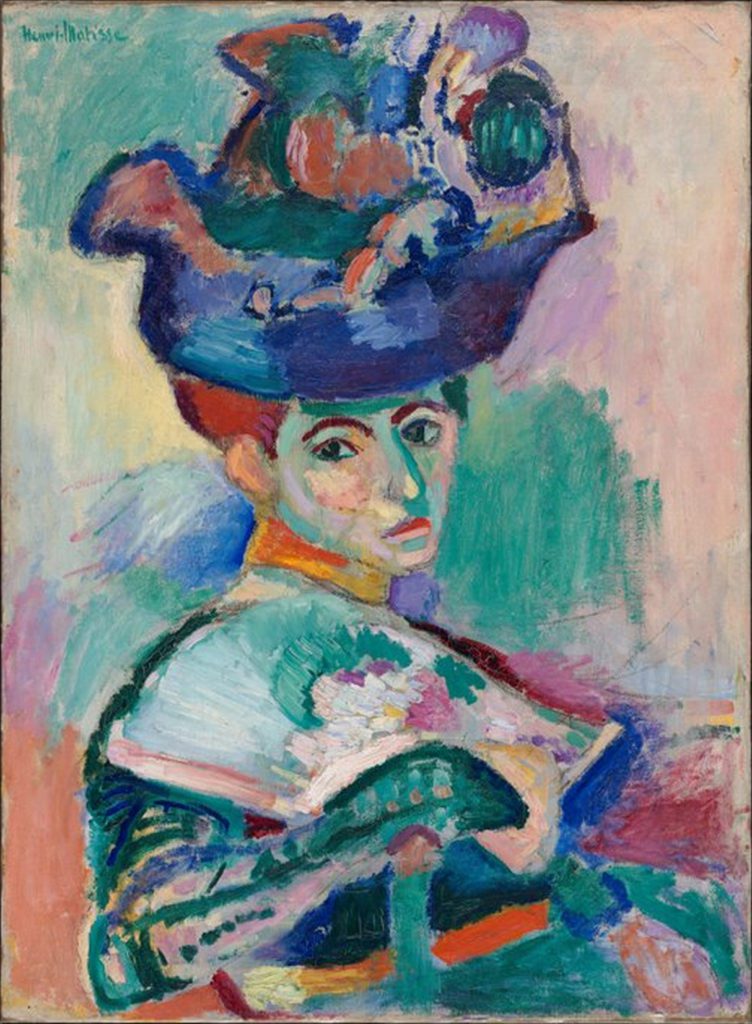
One of the most famous Fauvist paintings is Henri Matisse’s “Woman with a Hat” (1905). It depicts the artist’s wife in a brightly colored hat and dress against a vivid green background. The painting was criticized at the time for its daring use of color and its apparent lack of respect for traditional artistic conventions. Now, it is regarded as a classic.
Cubism (1907-1914)
Cubism is characterized by its rejection of traditional notions of perspective and representation and its focus on form and space abstractly. It was pioneered by Pablo Picasso and Georges Braque, who began working together in 1907. They were inspired by the works of Paul Cézanne and the art of non-Western cultures, such as African artwork.
The early years of Cubism are known as Analytic Cubism. It is characterized by an emphasis on breaking down objects into their component parts and reassembling them in a fragmented, abstracted form. This approach was often accompanied by a monochromatic palette and emphasis on the depiction of space through many viewpoints.
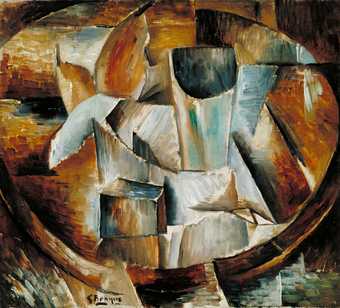
Later, Synthetic Cubism emerges, where artists begin incorporating collaged elements into their work. This can be newspaper clippings, sheet music, and other found objects. Synthetic Cubism also introduces a broader range of color and a more decorative approach to composition.
Cubist paintings are characterized by their geometric forms, flattened perspective, and fragmented, overlapping planes. The artists are interested in exploring the relationship of form and space to create a new visual language that could convey the complexity of the modern world.

To conclude, profound influence in cubism is on the development of modern art. It paves the way for subsequent movements such as Futurism, Dadaism, and Surrealism. It paves the way for the development of non-representational or abstract art.
Dada (1916-1924):
Dada is a subversive and anti-establishment art movement that emerged in Zurich, Switzerland during World War I. It is characterized by a rejection of traditional art forms, and an embrace of chance and spontaneity.
Dada artists, such as Hugo Ball, Tristan Tzara, and Marcel Duchamp, sought to challenge and provoke the art world and society at large through unconventional and provocative means. They used a wide range of mediums, including visual art, poetry, performance, and music, to express their anti-establishment sentiments.
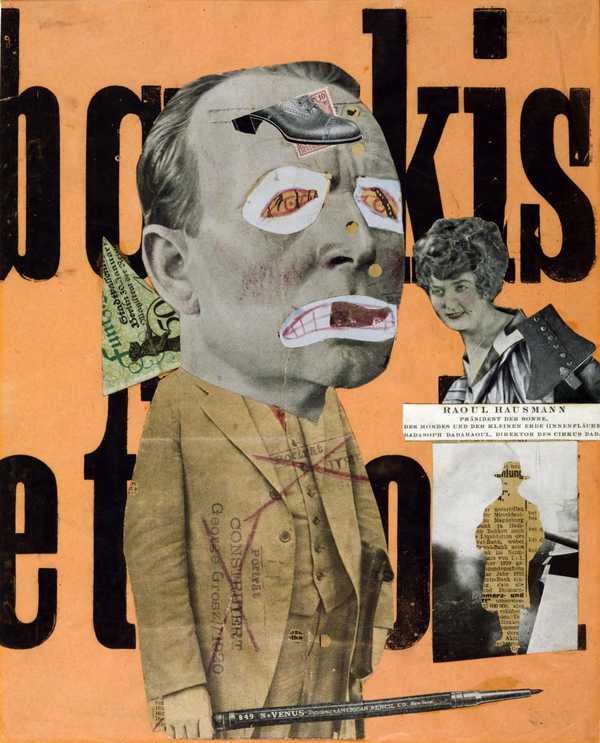
Dada is characterized by its irreverent and nonsensical approach to art, often employing found objects, collage, and assemblage, and mocking traditional art forms. Dada’s legacy is seen in subsequent art movements, such as Surrealism, Pop Art, and Conceptual Art, which are influenced by its radical and experimental spirit.
Surrealism (1924-1966):
Surrealism is an art movement that emerged in the 1920s as a reaction to the rationalism of the modern world. It seeks to explore the irrational and subconscious aspects of the human mind.
Surrealism is influenced by the writings of Sigmund Freud, which emphasizes the importance of dreams, the subconscious, and the irrational in human psychology. Artists such as Salvador Dalí, René Magritte, and Joan Miró are key figures in the Surrealist movement.
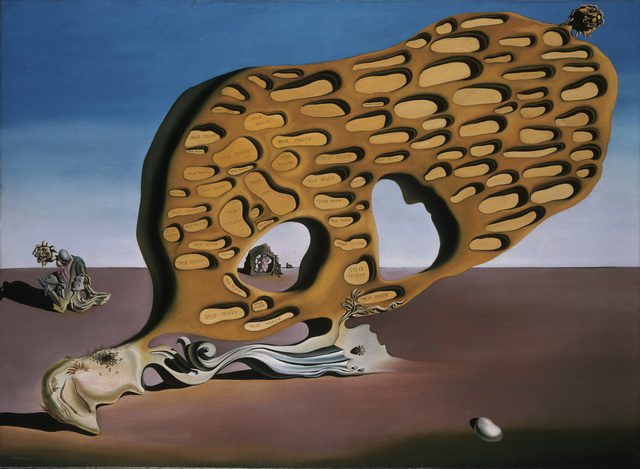
Surrealist art often features dreamlike and fantastical imagery, with unexpected juxtapositions of objects and unusual combinations of forms. It aims to challenge traditional notions of reality and create a sense of mystery, ambiguity, and surprise.
Surrealism also extends beyond visual art to literature, film, and other forms of artistic expression. The movement creates a significant impact on 20th-century art and continues to influence contemporary art today. It’s exploration of the subconscious and the boundless possibilities of the imagination cannot go unacknowledged.
Abstract Expressionism (1940s-1950s)
Abstract Expressionism is an art movement that emerged in post-World War II America in the late 1940s and 1950s. It is characterized by its emphasis on spontaneous, gestural, and expressive mark-making, and its rejection of traditional representation.
Notable artists associated with Abstract Expressionism include Jackson Pollock, Willem de Kooning, Mark Rothko, and Franz Kline. Abstract Expressionism represented a break from previous artistic conventions and aimed to convey emotion and personal expression through abstract forms and colors.
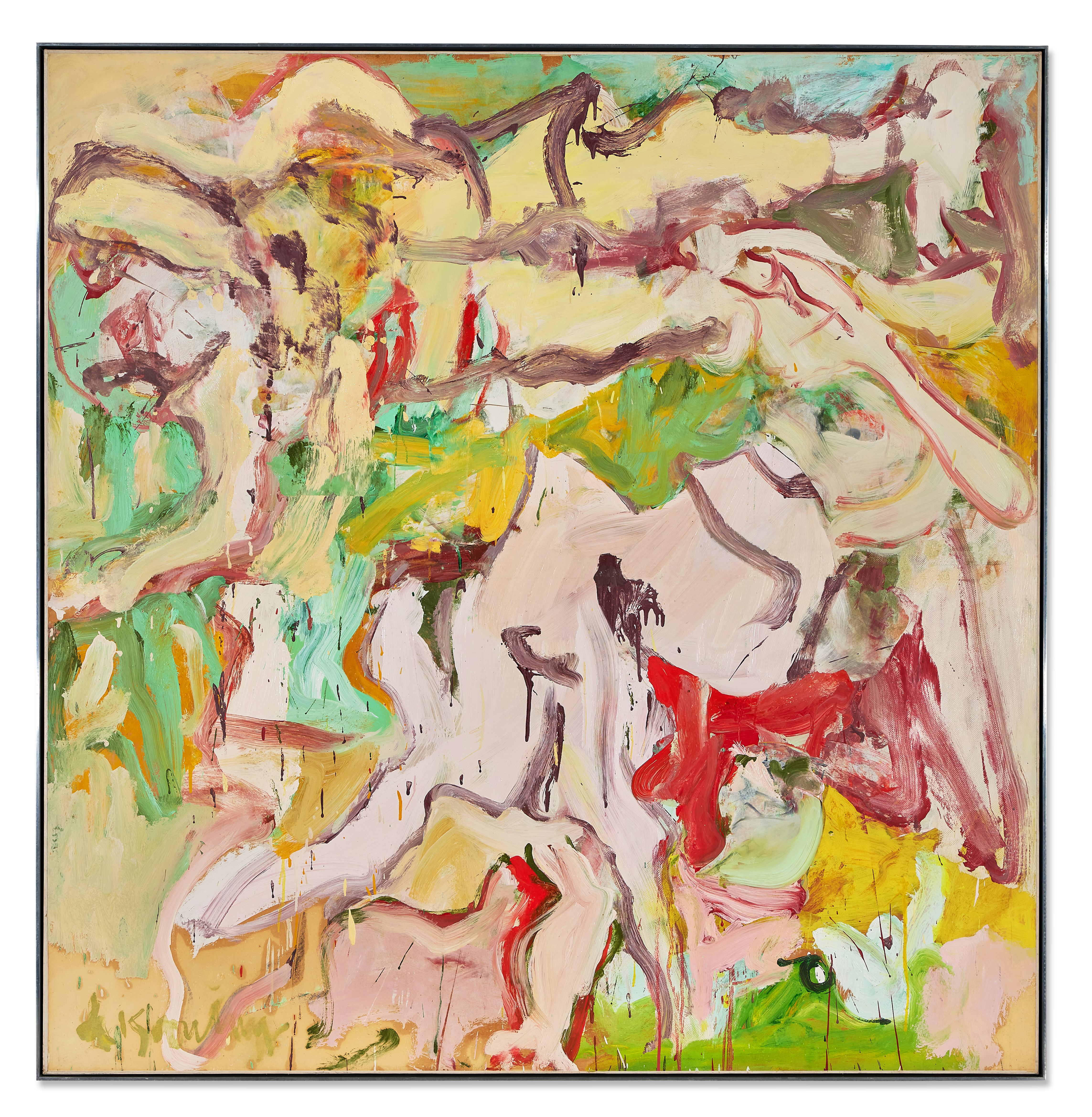
Also, it is seen as a radical departure from representational art and challenged traditional notions of aesthetics and artistic techniques. Abstract Expressionist paintings often feature large-scale canvases covered in dynamic and energetic brushstrokes or drips, creating a sense of action and movement.
The movement had a significant impact on the art world, both in the United States and internationally, and is considered one of the most important developments in the history of modern art. It paved the way for subsequent abstract art movements and continues to influence contemporary art today.
Pop Art (1950s-1960s):
Pop Art is an art movement that emerged in the 1950s and reached its peak in the 1960s. It originated in Britain and the United States as a reaction against the seriousness and elitism of the art world.
Pop Art was characterized by its use of popular imagery from consumer culture, such as comic books, advertising, and everyday objects. It challenges traditional notions of high art and seeks to blur the boundaries between art and everyday life. Pop Art works often featured bold colors, simple shapes, and repetitive patterns, and were created using commercial techniques like screen printing.
Next, notable artists associated with Pop Art include Andy Warhol, Roy Lichtenstein, and Claes Oldenburg. Pop Art was a reflection of the mass media and consumer culture of the postwar era, and it critiqued the increasing commercialization and commodification of society.
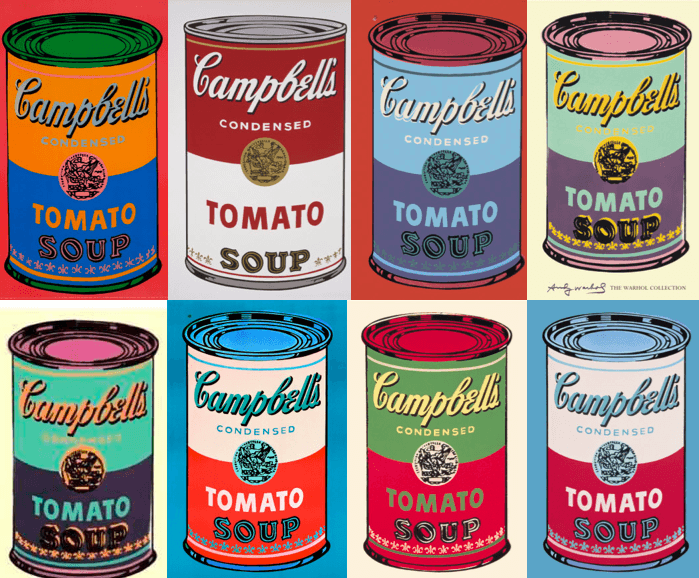
Pop Art has a significant impact on the art world, influencing not only visual art but also fashion, design, and popular culture. It continues to be a prominent art form in contemporary art and has left a lasting legacy in the history of modern art.
Minimalism (1960s-1970s):
Minimalism is an art movement that emerged in the 1960s and is characterized by simplicity, purity, and austerity in artistic expression. It originates in the United States, and was a reaction against the excesses of Abstract Expressionism and Pop Art.
Minimalist artworks often feature clean lines, geometric shapes, and a limited color palette, with an emphasis on form, color, and space. It seeks to reduce art to its essential elements and eliminate unnecessary details, aiming to achieve a sense of clarity and precision in artistic creation.
Minimalist artists often used industrial materials and fabrication techniques, such as metal, glass, and neon, to create their works. Also, it extended beyond visual art to architecture, design, and other fields, influencing various aspects of contemporary culture.
In addition, minimalism challenges traditional notions of art and aesthetics. Its emphasis on simplicity and objectivity provokes critical discussions about the nature of art with the viewer.
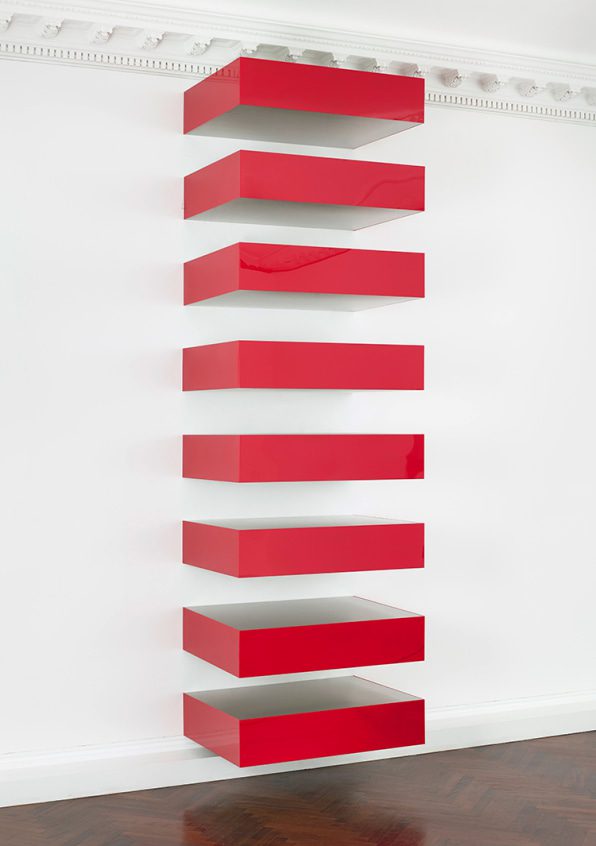
Notable artists associated with Minimalism include Donald Judd, Agnes Martin, Frank Stella, and Dan Flavin. Despite its seemingly simplistic appearance, Minimalism is a complex and influential art movement that continues to be a significant force in contemporary art and design. In the recent years, it has made a major comeback in all visual art forms.
Conceptual Art (1960s-1970s):
Conceptual art is characterized by the prioritization of ideas and concepts over traditional aesthetic concerns.
Also, it challenges the notion that art must be an object or a physical manifestation. Instead, it focuses on the conceptual and intellectual aspects of art-making. Notable artists associated with Conceptual art include Sol LeWitt, Joseph Kosuth, and Yoko Ono.
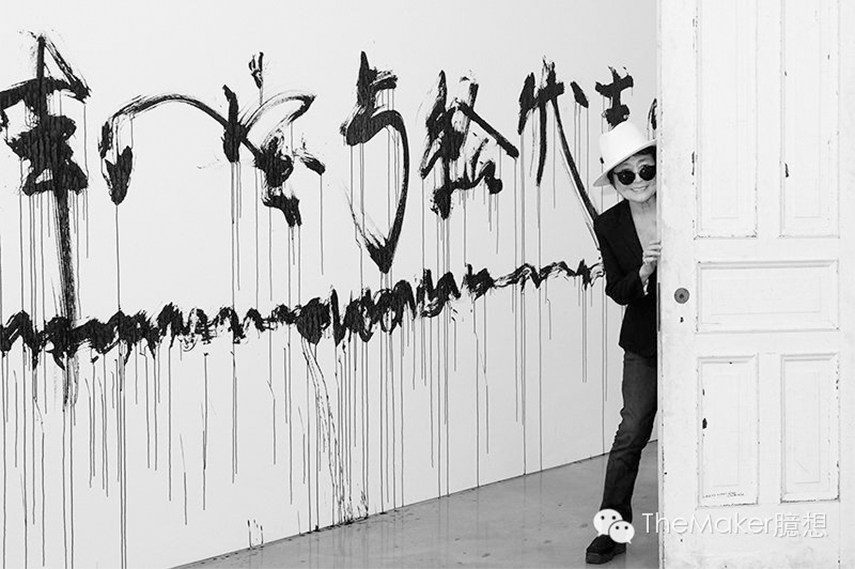
Conceptual art emerged as a response to the dominance of formalism and the commodification of art in the art world. It rejects traditional mediums and techniques in favor of exploring the primary elements of artistic expression.
Conceptual art often involves the use of text, photographs, videos, performances, and installations to convey ideas and concepts. The history of conceptual art is closely tied to the broader cultural and social changes of the 1960s and 1970s. This includes the civil rights movement, feminist movement, and anti-war protests.
Conceptual art challenges the traditional boundaries of art, blurring the lines between art and everyday life, and questioning the authority of the art object and the role of the artist.
In addition, it emphasizes the role of the viewer in interpreting and completing the artwork. It shifts the focus from the artist’s hand to the viewer’s mind. Despite its controversial and sometimes provocative nature, Conceptual art has had a lasting impact on the art world.

Comments are closed.